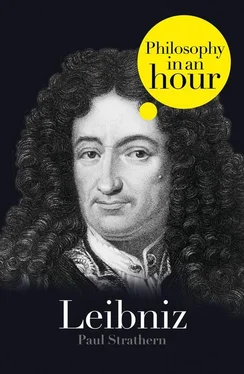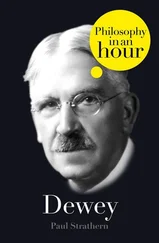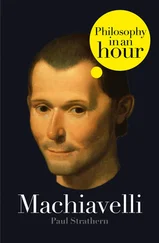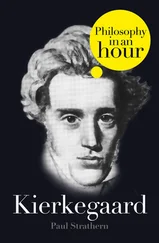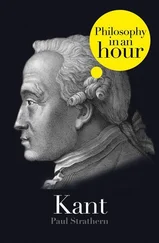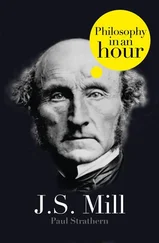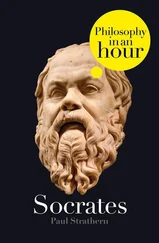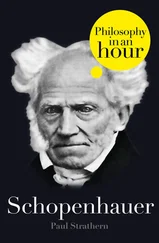Not surprisingly, this combination of mathematics, reason, and scientific method led Descartes to adopt a mechanistic view of the world. The universe was like a huge machine or clock mechanism which had initially been set in motion by God. Likewise, objects existed in absolute space: there was an absolute difference between their positions, and they were either absolutely at rest, or in motion.
Leibniz ingeniously perceived a flaw in this argument. According to this absolutist view, space must be different from the objects that are at rest, or in motion, within it. In which case space must be completely uniform throughout, like an absolute emptiness. But if so, how can we use it to measure location by means of coordinates? Such coordinates must inevitably be imaginary – they couldn’t actually exist in this featureless uniformity. But if such coordinates are imaginary, they must be arbitrarily imposed on space by us. So how can we possibly know that they are stationary? What would they be stationary in reference to?
Here we can see in embryo the argument for Einstein’s relativity. But instead of investigating this in mathematical terms (like Einstein), Leibniz chose to see it in terms of metaphysics. Here lay the germ of Leibniz’s mature philosophy.
In light of his preceding argument, Leibniz came to the remarkable conclusion that space did not exist. (He used a similar argument concerning time, coming to the same conclusion.) Leibniz maintained that as there was no absolute frame of reference, our notions of space and time were mere superstitious assumptions. When examined in the light of his argument, only things existed. The idea that one thing was faster than another, appeared at a later time than another, or was closer to us than another, depended entirely upon our relativistic point of view. Another person, viewing from another perspective, would see things differently. There was no absolute space or time: they simply didn’t exist. Only God was able to see things as they really were – from an utterly perspectiveless viewpoint devoid of space and time. So far Leibniz’s philosophy has distinct echoes of Platonic idealism – where the particular world around us is seen as an illusion reflecting an ultimate reality of ideal forms. But the new Cartesianism had shown how it was possible to base philosophic truth upon reason rather than on an unseen transcendent reality of ideas. Although Leibniz didn’t entirely agree with Descartes, he felt there was no going back to such an unscientific idealistic approach as Plato’s. Instead of Descartes’s mechanistic view of the world, Leibniz proposed a dynamic picture involving kinetic energy. As a result of Leibniz’s discovery of calculus, whose calculations involved diminishing values receding to the infinitesimally small, he came to see that things ultimately consisted of infinitesimally small points which had neither space nor time as attributes. These he would eventually call ‘monads’.
Конец ознакомительного фрагмента.
Текст предоставлен ООО «ЛитРес».
Прочитайте эту книгу целиком, купив полную легальную версию на ЛитРес.
Безопасно оплатить книгу можно банковской картой Visa, MasterCard, Maestro, со счета мобильного телефона, с платежного терминала, в салоне МТС или Связной, через PayPal, WebMoney, Яндекс.Деньги, QIWI Кошелек, бонусными картами или другим удобным Вам способом.
